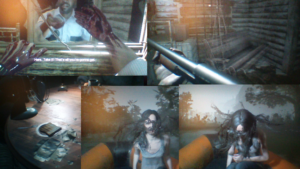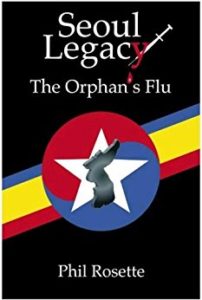 Purist might believe a true literary experience occurs with the left hand holding book and the right dutifully turning thick pages of print. Generally, I agree except for Vladimir Nabokov’s Lolita read by Jeremy Irons. I vote this one better to be heard by the gifted actor’s deep resonating voice and not seen. Here are a few things when considering the choice of print or sound.
Purist might believe a true literary experience occurs with the left hand holding book and the right dutifully turning thick pages of print. Generally, I agree except for Vladimir Nabokov’s Lolita read by Jeremy Irons. I vote this one better to be heard by the gifted actor’s deep resonating voice and not seen. Here are a few things when considering the choice of print or sound.
The Structure of Black and White
In every list of the best books, Nabokov’s Lolita is present. This book published over fifty years ago presents a forbidden topic wrapped in beautiful prose which is shocking and endearing at the same time. The opening sentences are pure power – “Lolita, light of life, fire of my loins. My sin, my soul.”
The reader knows of tragedy to come and embraces the journey to discover why the narrator says, “You can always count on a murderer for a fancy prose style.” Humbert Humbert’s obsessions are repulsive and disgusting to readers, yet he suffers a growing paranoia for his premeditations, actions and results. However, HH somehow manages to be sympathetic, even pitiful, in the skilled hands of Nabokov. The character, neither villain nor hero, fills a new space as the anti-hero, anguishing and lamenting for the beauty and loss of his young love, his captive, Dolores Haze.
If you do read the words, the black and white sentences jig and jag spilling over to the next line and the next with semi-colons inserted as the author’s favorite punctuation mark. I appreciate well placed clauses as much as the next writer and find Nabokov full of surprise and tantalizing sentence structure. Masterful combinations are only fully absorbed by the eyes – otherwise melting into an auditory symphony of words. Now that I have finished the novel, I am ruined for anything less than prose perfection.
Beyond the Book
One invaluable thing in the book is a chronology of Nabokov’s life from birth to death with a column for literary context and historical events. I confirm Nabokov’s birth in St. Petersburg and the brief overlap of his life with Russian greats Tolstoy and Chekhov. He was almost a teenager during the Russian Revolution and published his first book of poems during World War I at the age of seventeen. The family fled and went into exile while Vladimir studied at Cambridge. When Joyce published Ulysses and Eliot published The Waste Land in 1922, Nabokov’s father was assassinated in Berlin.
So, it is odd to me that Nabokov lived or continued to live in Berlin from 1925-1937. He published nine novels in Russian, moved to Paris and then the United States in 1940, the same year Hemingway published For Whom the Bell Tolls. As my son now considers colleges for study, it catches my attention that Nabokov taught at Wellesley and then Cornell. During this time, he published his next novel in English. His spectacular writing in English must rival his native Russian language.
Shortly after the year of Stalin’s death, Lolita was published in 1955 by a Parisian publisher of explicit material because the established major publishers feared the public’s reaction to this novel’s subject matter. In 1958, Pasternak published Doctor Zhivago, one of my mother-in-law’s favorites (on my list to read or watch the 1965 film). One year later, Nabokov resigned from Cornell and moved to Switzerland. In the final decade of Nabokov’s life, Bulgakov published The Master and Margarita.
Hearing is Believing
Better than attending a three hour play or watching a film, I lived this novel for precisely eleven and a half hours – over two weeks commuting to work. The deep baritone voice of the British actor disrupted my usual car audio listening vibe. As Jeremy Irons raced through the Forward at a clip faster than I usually listen, talk or think, I weaved in my highway lane, resetting the base to low and going back to tweak the treble eventually to high before I could comfortably listen to the recording. I had just achieved the perfect balance when I heard “. . . a classic in psychiatric circles . . . the wayward child, the egotistic mother, the panting maniac – these are not only vivid characters in a unique story; they warn us of dangerous trends; they point out potent evils.” The warning added an extra writer-ly chill to my January morning. I debated whether to turn back and stop, but I trusted a gifted actor with an-oh-so-marvelous voice. Jeremy Irons became Humbert Humbert, transforming mere words on a page, unfolding the story and revealing the depth of depravity and desperation – hence the panting maniac..
National Public Radio, in a fiftieth year anniversary of Lolita, interviewed Cornell staff about Nabokov. The author traveled the United States and used the travel experiences for Lolita. He also frequently rode the public transit and listened to the communication style of Lolita-aged girls taking notes on index cards. It is said Nabokov wrote the entire novel on index cards and pieced the story together. The car ride after HH picks up Dolores Haze from summer camp shows his research with perfectly timed teenage sarcasm, irreverence and awkward interactions.
This audio book delivers bursts of humor such as the first overnight hotel stay. HH misinterprets the questions of a drunk on the front porch. Irons is brilliant in reading this little exchange in Chapter 28 which highlights the beginning of HH’s well-deserved paranoia.
‘Where the devil did you get her?’
‘I beg your pardon?’
‘I said: the weather is getting better.’
‘Seems so.’
‘Who’s the lassie?’
‘My daughter.’
‘You lie – she’s not.’
‘I beg your pardon?’
‘I said: July was hot.’
The audio book succeeds where the 1962 Stanley Kubrick film did not. The film, however, unites Jeremy Irons with the work, the actor cast for HH in the film and a natural for the recording. His reading is acting and makes this one of the best audio book recordings I’ve heard to date.




